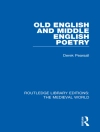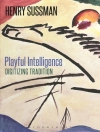This book is about representations of the devil in English and European literature. Tracing the fascination in literature, philosophy, and theology with the irreducible presence of what may be called evil, or comedy, or the carnivalesque, this book surveys the parts played by the devil in the texts derived from the Faustus legend, looks at Marlowe and Shakespeare, Rabelais, Milton, Blake, Hoffmann, Baudelaire, Goethe, Dostoevsky, Bulgakov, and Mann, historically, speculatively, and from the standpoint of critical theory. It asks: Is there a single meaning to be assigned to the idea of the diabolical? What value lies in thinking diabolically? Is it still the definition of a good poet to be of the devil’s party, as Blake argued?
Table of Content
Introduction: Literature and Manicheeism.- Chapter 1: ‘The Tempter or the Tempted, Who Sins Most?’.- Chapter 2: Medieval and Early Modern Devils: Names and Images.- Chapter 3: From Carnival to
King Lear: Ships, Dogs, Fools, and the
Picaro.- Chapter 4: Fallen Fire: Job, Milton, and Blake.- Chapter 5: Masks, Doubles, and Nihilism.- Chapter 6: Goethe:
Faust and Modernity.- Chapter 7: Dostoevsky: Murder and Suicide.- Chapter 8: Bulgakov, Mann, Adorno, and Rushdie.
About the author
Jeremy Tambling retired from Professorships in Literature first in Hong Kong and then in Manchester, UK, and now works as an independent scholar and critic.












